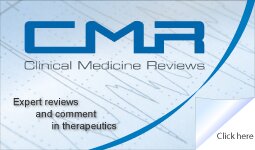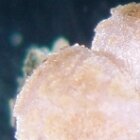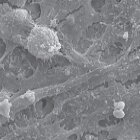Chemistry
Open access articles in chemistry. Articles from Analytical Chemistry Insights, Biochemistry Insights, Organic Chemistry Insights, Perspectives in Medicinal Chemistry




 Latest news
Latest news
- Open access articles published in September
-
- 02/Oct/2009
- Announcing the Indian Journal of Clinical Medicine
-
- 30/Sep/2009
- Autism Insights launched
-
- 29/Sep/2009
- Newsletter summary (week 37, 2009)
-
- 25/Sep/2009
- Interview with Clinical Medicine: Cardiology editorial board member Dr Vernon Barnes
-
- 25/Sep/2009
- Interview with Cancer Informatics editorial board member Dr Grant Izmirlian
-
- 22/Sep/2009
- Call for papers for Analytical Chemistry Insights from Dr Gabor Patonay
-
- 22/Sep/2009
- Sponsor the IBM-OCI Integrative Discovery team in Ride to Conquer Cancer
-
- 15/Sep/2009
- No article processing fees for selected journals
-
- 25/Sep/2009
- Newsletter summary (week 36, 2009)
-
- 15/Sep/2009
- Interview with Healthy Aging and Clinical Care in the Elderly editorial board member Dr Davide Malatesta
-
- 15/Sep/2009
- Interview with Translational Oncogenomics author Dr David Frank
-
- 10/Sep/2009
- Interview with Retrovirology: Research and Treatment author Dr Elcio Leal
-
- 10/Sep/2009
- Interview with Microbiology Insights author Dr Tinatin Doolotkedlieva
-
- 10/Sep/2009
- Call for papers for Drug Target Insights by Dr Monica Milani
-
- 10/Sep/2009
- Call for papers for Clinical Medicine: Urology from Dr Xiangyi Lu
-
- 10/Sep/2009
- Research profile on Gene Regulation and Systems Biology author Dr Noboru Uchide
-
- 09/Sep/2009
- Interview with Biomarker Insights editorial board member Dr Lawrence Cheskin
-
- 07/Sep/2009
- Newsletter summary (week 35, 2009)
-
- 04/Sep/2009
- Research profile of Clinical Medicine: Endocrinology and Diabetes author Dr Hiro Koshiyama
-
- 04/Sep/2009
- Open access articles published in August
-
- 03/Sep/2009
- Call for papers for Clinical Medicine: Circulatory, Respiratory and Pulmonary Medicine from Dr Hussein Foda
-
- 03/Sep/2009
- Interview with Cancer Informatics editorial board member Dr Georgios S. Stamatakos
-
- 03/Sep/2009
- Announcing mobile Libertas Academica website
-
- 02/Sep/2009

 Latest articles
Latest articles
- A Role for IR-β in the Free Fatty Acid Mediated Development of Hepatic Insulin Resistance?
- The Role of Adjuvant Therapy in Gastrointestinal Stromal Tumor after Operative Treatment
- Genome-Wide Identification and Evolutionary Analysis of the Animal Specific ETS Transcription Factor Family
- Prophylaxis of Invasive Fungal Infections: A Review of the Use of Posaconazole
- Dysfunction of Corticomotoneurons in Guillain-Barré Syndrome (GBS)?
- In vitro Efficacy of Ureteral Catheters Impregnated with Ciprofloxacin, N-acetylcysteine and their Combinations on Microbial Adherence
- The Effects of Fetal Surgery on Retinopathy of Prematurity Development
- Identifying the Sequence and Distinguishing the Oxidized—Methionine from Phenylalanine Peptides by MALDI TOF/TOF Mass Spectrometry in an Antarctic Bacterium Pseudomonas Syringae
- Changes in Plasma IL-6, Plasma VEGF and Serum YKL-40 During Treatment with Etanercept and Methotrexate or Etanercept Alone in Patients with Active Rheumatoid Arthritis Despite Methotrexate Therapy
- Prospects for Proteomics Directed Genomic and Genetic Analyses in Disease Discoveries
- Pharmacotherapy Options in Cancer Treatment-Induced Bone Loss: Focus on Bisphosphonates
- Current Rational to Prescribe Tigecycline: Critical Analysis of the Evidence and Usage Algorithms by an Argentinean Experts Panel
- Infliximab: A Review of its Use in the Treatment of Crohn’s Disease
- Metformin: A Review of its Use in the Treatment of Type 2 Diabetes
- Autism Etiology: Genes and the Environment
- Left Ventricular Rupture Post Mitral Valve Replacement
- Graphical User Interfaces for Molecular Dynamics—Quo Vadis?
- Pharmacotherapy of Chronic Obstructive Pulmonary Disease: Focus on Arformoterol Tartrate
- A Review of Sildenafil in the Treatment of Pediatric Pulmonary Arterial Hypertension
- Impact of One-Year Methadone Maintenance Treatment in Heroin Users in Jiangsu Province, China
Most read articles
- Current Status of Monocyte Differentiation-Inducing (MDI) Factors Derived from Human Fetal Membrane Chorion Cells Undergoing Apoptosis after Infl uenza Virus Infection
- Relationship Between the Plasma Concentration of C-Reactive Protein and Severity of Peripheral Arterial Disease
- Intraspecific ITS Variability in the Kingdom Fungi as Expressed in the International Sequence Databases and Its Implications for Molecular Species Identification
- A Simple Derivation of the Distribution of Pairwise Local Protein Sequence Alignment Scores
- Mammoth and Elephant Phylogenetic Relationships: Mammut Americanum, the Missing Outgroup
- DICOM Structured Reporting and Cancer Clinical Trials Results
- Evaluation of Two Outlier-Detection-Based Methods for Detecting Tissue-Selective Genes from Microarray Data
- Systems Biology-Based Identification of Crosstalk between E2F Transcription Factors and the Fanconi Anemia Pathway
- Exploring the Evolutionary History of the Differentially Expressed Genes between Human Populations: Action of Recent Positive Selection
- On the Adaptive Design Rules of Biochemical Networks in Evolution
- Fast Genes and Slow Clades: Comparative Rates of Molecular Evolution in Mammals
- Phylogenetic diversity (PD) and biodiversity conservation: some bioinformatics challenges
- Identification and Quantitation of Asparagine and Citrulline Using High-Performance Liquid Chromatography (HPLC)
- Identification of Conflicting Selective Effects on Highly Expressed Genes
- In Silico Promoter Analysis can Predict Genes of Functional Relevance in Cell Proliferation: Validation in a Colon Cancer Model
(previous 30 days)Site updates
Analytical Chemistry Insights
The present study employs time of flight mass spectrometry for quantitative analysis of the local anesthetic drugs ropivacaine and bupivacaine in authentic, pharmaceutical and spiked human plasma as well as in the presence of their impurities 2,6-dimethylaniline and alkaline degradation product. The method is based on time of flight electron...
Two sensitive and validated methods were developed for determination of a racemic mixture citalopram and its enantiomer S-(+) escitalopram. The first method was based on direct measurement of the intrinsic fluorescence of escitalopram using sodium dodecyl sulfate as micelle enhancer. This was further applied to determine escitalopram in spiked human...
New Spectrofluorimetric Method with Enhanced Sensitivity for Determination of Paroxetine in Dosage Forms and Plasma (18/Nov/2008)
New simple spectrofluorimetric method with enhanced sensitivity has been developed and validated for the determination of the antidepressant paroxetine (PXT) in its dosage forms and plasma. The method was based on nucleophilic substitution reaction of PXT with 4-chloro-7-nitrobenzo-2-oxa-1,3-diazole in an alkaline medium (pH 8) to form a highly fluorescent derivative...
Use of Fourier Transform Infrared (FTIR) Spectroscopy to Study Cadmium-Induced Changes in Padina Tetrastromatica (Hauck) (15/Oct/2008)
The aim of this study is to adopt the approach of metabolic fingerprinting through the use of Fourier Transform Infrared (FTIR) technique to understand changes in the chemical structure in Padina tetrastromatica (Hauck). The marine brown alga under study was grown in two different environmental conditions; in natural seawater (P....
This work described study protocols on the production of Palm-Based Standard Reference Materials for iodine value and slip melting point. Thirty-three laboratories collaborated in the inter-laboratory proficiency tests for characterization of iodine value, while thirty-two laboratories for characterization of slip melting point. The iodine value and slip melting point of...
A comparison of detection limits of gas chromatography-mass spectrometry (GC-MS) in selected ion monitoring (SIM) with gas chromatography-tandem mass spectrometry (GC-MS/MS) in selected reaction monitoring (SRM) mode with both electron ionization (EI) and negative-ion chemical ionization (NCI) are presented for over 50 pesticides ranging from organochlorines (OCs), organophosphorus pesticides (OPs)...
Biochemistry Insights
A Role for IR-β in the Free Fatty Acid Mediated Development of Hepatic Insulin Resistance? (02/Oct/2009)
Several studies have been conducted to elucidate the role of free fatty acids (FFAs) in the pathogenesis of type 2 diabetes, but the exact molecular mechanism by which FFAs alter glucose metabolism in the liver is still not completely understood.1-4 In a recent publication, Ragheb and co-workers have examined the...
Chelation Therapy for Mercury Poisoning (07/Aug/2009)
Chelation therapy has been the major treatment for heavy metal poisoning. Various chelating agents have been developed and tested for treatment of heavy metal intoxications, including mercury poisoning. It has been clearly shown that chelating agents could rescue the toxicity caused by heavy metal intoxication, but the potential preventive role...
François Gagné1, M. Laura Martín-Díaz2,3 and Christian Blaise11Fluvial Ecosystem Research, Environment Canada, Montréal, Quebec, Canada. 2Cátedra UNESCO/UNITWIN/WiCop, Facultad de Ciencias del Mary Ambientales, Universidad de Cádiz, Puerto Real, Spain. 3Instituto de Ciencias Marinas de Andalucía, CSIC, Puerto Real (Cádiz), Spain. AbstractIn aquatic environments, genotoxicity results from the effects of pollution...
Shimoda and co-workers published a paper on the pharmacological properties of glycosides of the peppery compound capsaicin (1 ) and its derivative 8-nordihydrocapsaicin (2). In their paper they conclude that the β-glucoside and β-maltoside of 1 and the β-glucoside of 2 still have the same potent anti-obese activity but...
Renal Toxicity of Mercuric Chloride at Different Time Intervals in Rats (23/Jun/2009)
This study was undertaken to study the renal toxicity of mercuric chloride in rats at different periods of time. The following groups of rats were studied: i) control, ii) placebo, iii) rats injected with a single ip dose of 100 mg/kg body weight of 2, 3 dimercapto- 1-propanesulfonic acid, iv) rats injected with a single ip dose of 100 mg/kg body weight of 2, 3 dimercapto-1-propanesulfonic acid (DMPS) followed by a single dose ip...
In the current study, we used immunoprecipitation and immunoblotting to examine the levels and phosphorylation status of the insulin receptor-beta subunit (IR-β), as well as the down stream target in PI3K pathway, total PKB/Akt as well as their phosphorylated forms. The assessment of FFAs treatment showed no direct and significant...
Organic Chemistry Insights
Poly(ADP-ribose) polymerase (PARP) polyADP-ribosylates proteins involved in various physiological processes. Accumulated evidence suggests not only protein-conjugated poly(ADP-ribose) but also protein-free poly(ADP-ribose) function in various physiological processes. There are increasing occasions that require protein-free poly(ADP-ribose) to study the function and dynamics of poly(ADP-ribose) in cells. However, the availability of poly(ADP-ribose) is...
Introductory Editorial (Organic Chemistry Insights) (17/Mar/2008)
Introductory Editorial by Dr Hafiz Ahmed, University of Maryland Biotechnology Institute, Center of Marine Biotechnology, Baltimore, Maryland, U.S.A.
Perspectives in Medicinal Chemistry
Chaperone therapy is a newly developed molecular approach to lysosomal diseases, a group of human genetic diseases causing severe brain damage. We found two valienamine derivatives, N-octyl-4-epi-β-valienamine (NOEV) and N-octyl-β-valienamine (NOV), as promising therapeutic agents for human β-galactosidase deficiency disorders (mainly GM1-gangliosidosis) and β-glucosidase deficiency disorders (Gaucher disease), respectively. We...
Aminoglycosides: Molecular Insights on the Recognition of RNA and Aminoglycoside Mimics (28/Apr/2009)
RNA is increasingly recognized for its significant functions in biological systems and has recently become an important molecular target for therapeutics development. Aminoglycosides, a large class of clinically significant antibiotics, exert their biological functions by binding to prokaryotic ribosomal RNA (rRNA) and interfering with protein translation, resulting in bacterial cell...
Perspectives on Using Physcomitrella Patens as an Alternative Production Platform for Thapsigargin and Other Terpenoid Drug Candidates (04/Mar/2009)
To overcome the potential future demand for terpenoids used as drugs, a new production platform is currently being established in our laboratory. The moss Physcomitrella has been chosen as the candidate organism for production of drug candidates based on terpenoids derived from plants, with a primary focus on the sesquiterpene lactone, thapsigargin. This drug candidate and other candidates/drugs with sesquiterpene skeleton are difficult to obtain by chemical synthesis due to their large number of chiral...
Bioactive and Structural Metabolites of Pseudomonas and Burkholderia Species Causal Agents of Cultivated Mushrooms Diseases (09/May/2008)
Pseudomonas tolaasii, P. reactans and Burkholderia gladioli pv. agaricicola, are responsible of diseases on some species of cultivated mushrooms. The main bioactive metabolites produced by both Pseudomonas strains are the lipodepsipeptides (LDPs) tolaasin I and II and the so called White Line Inducing Principle (WLIP), respectively, LDPs which have been...
The Role of Integrins in Cancer and the Development of Anti-Integrin Therapeutic Agents for Cancer Therapy (10/Apr/2008)
Integrins have been reported to mediate cell survival, proliferation, differentiation, and migration programs. For this reason, the past few years have seen an increased interest in the implications of integrin receptors in cancer biology and tumor cell aggression. This review considers the potential role of integrins in cancer and also...
The heterogeneity of symptoms and disease progression observed in synucleinopathies, of which Parkinson’s disease (PD) is the most common representative, poses large problems for the discovery of novel therapeutics. The molecular basis for pathology is currently unclear, both in familial and in sporadic cases. While the therapeutic effects of L-DOPA...








